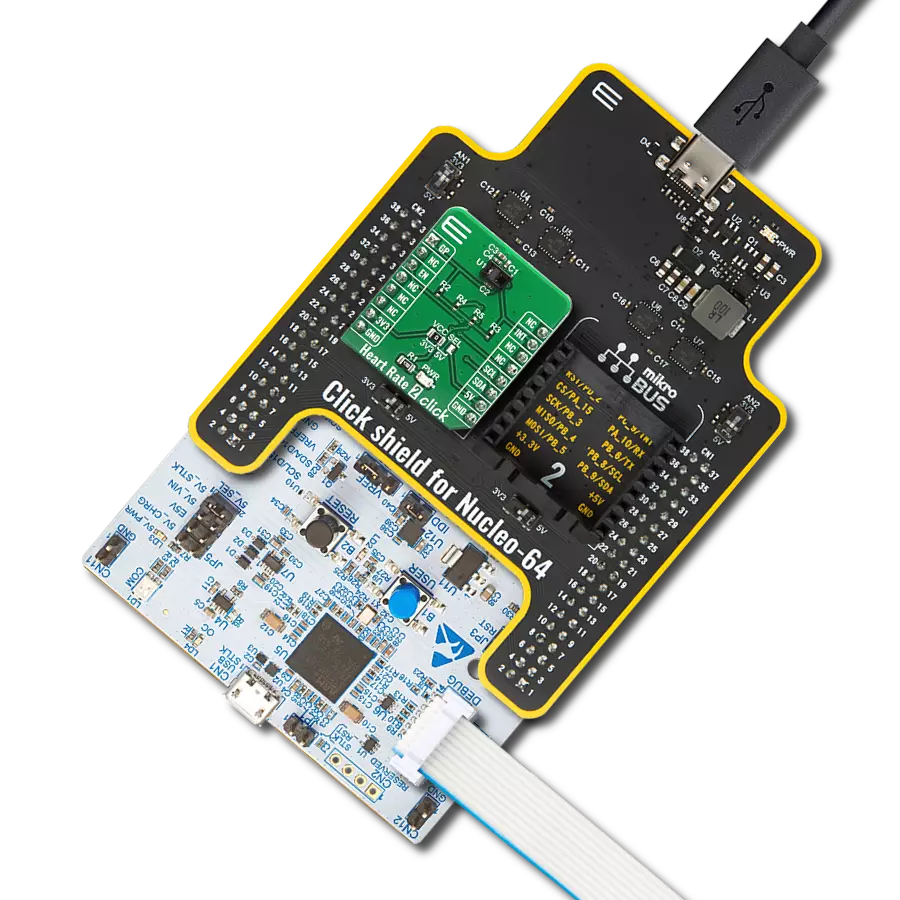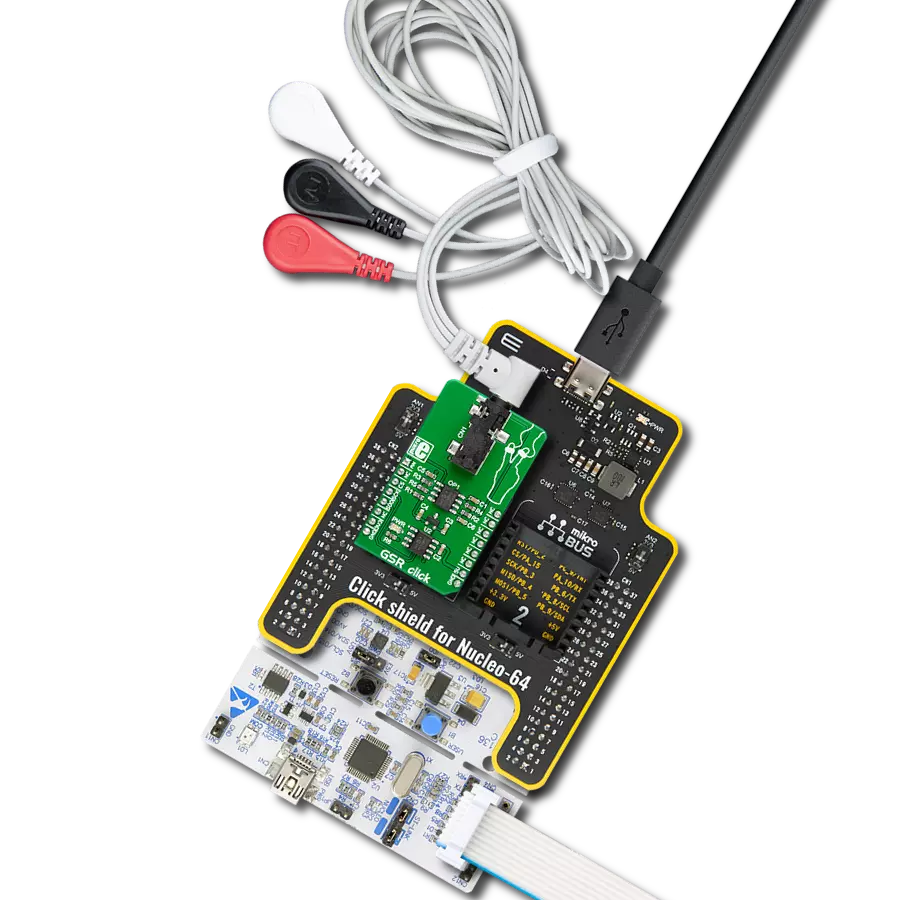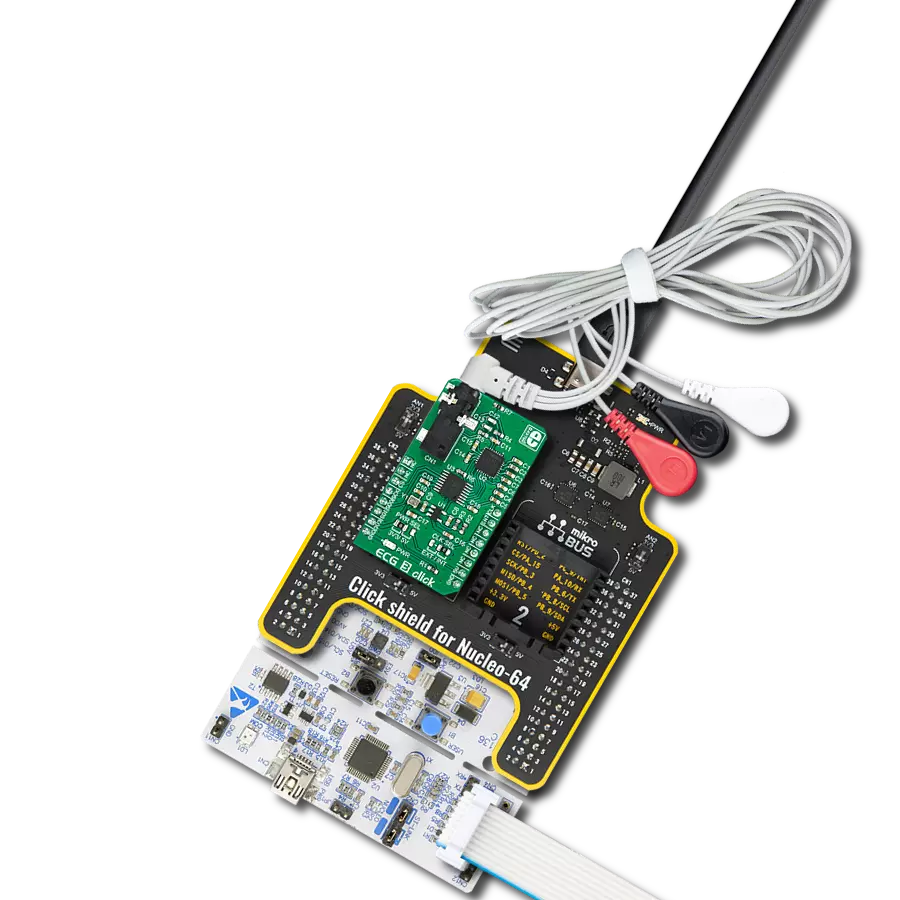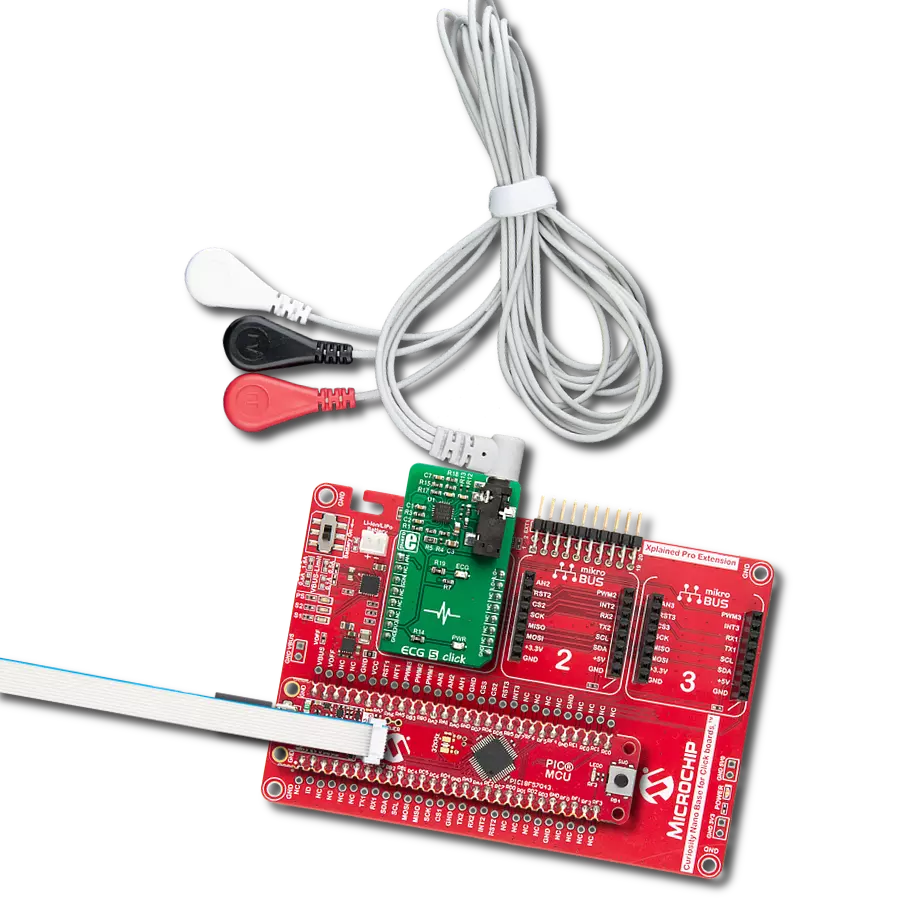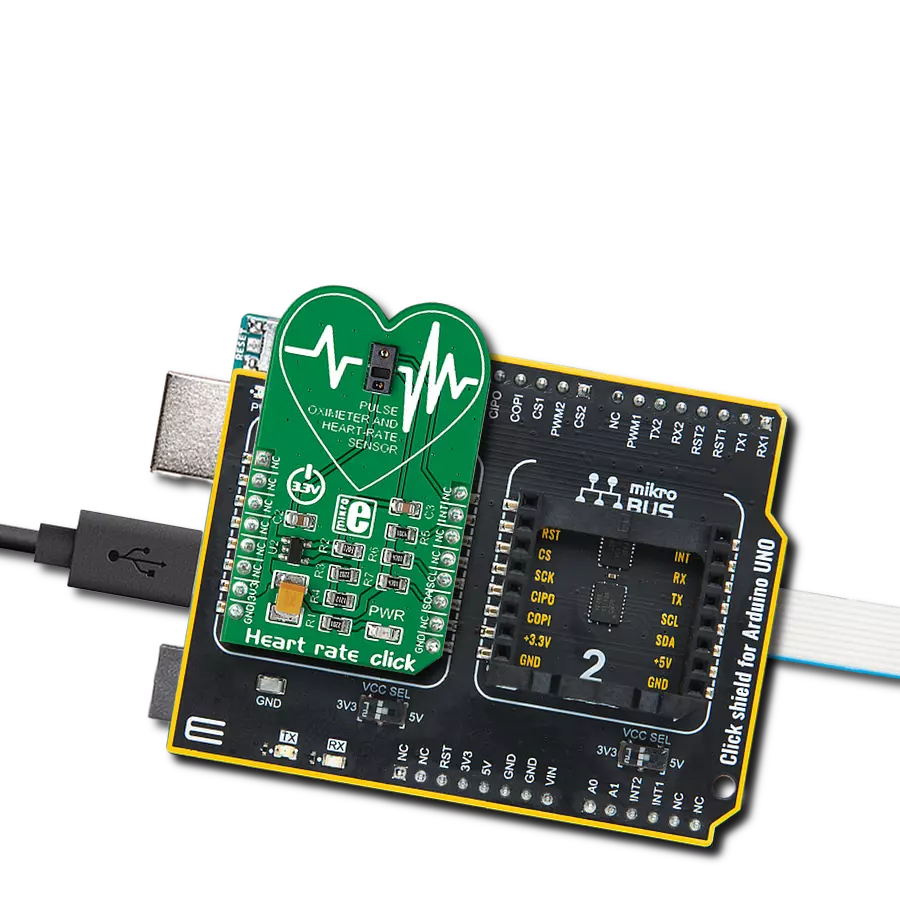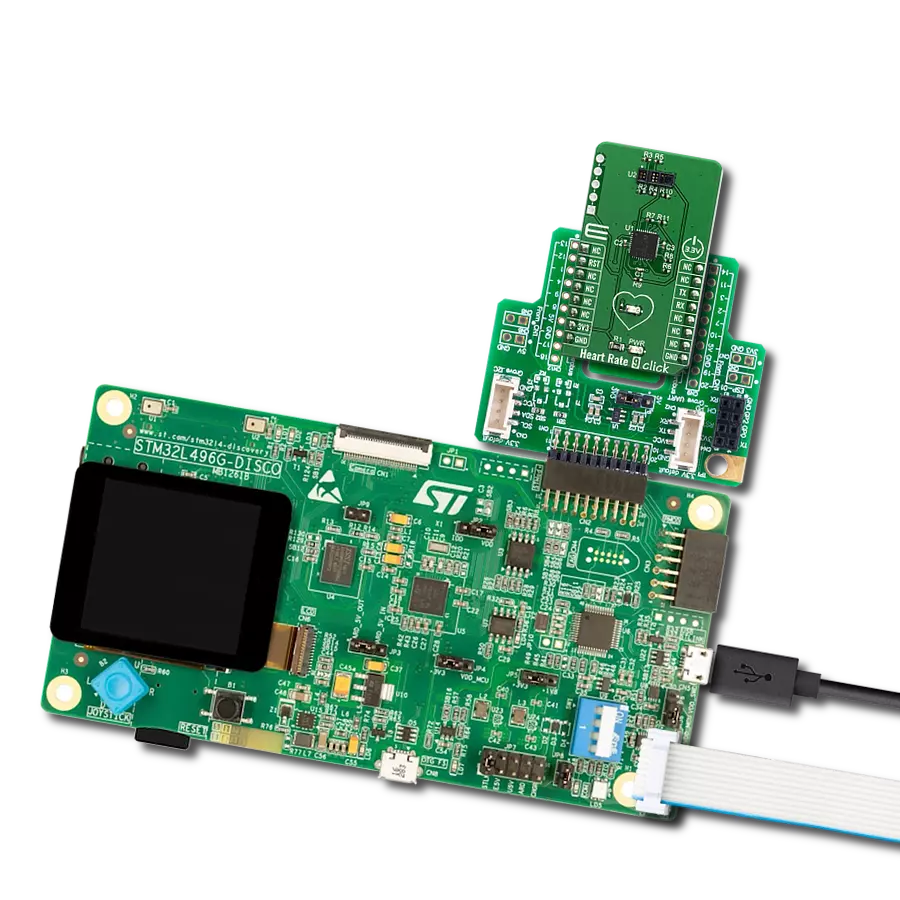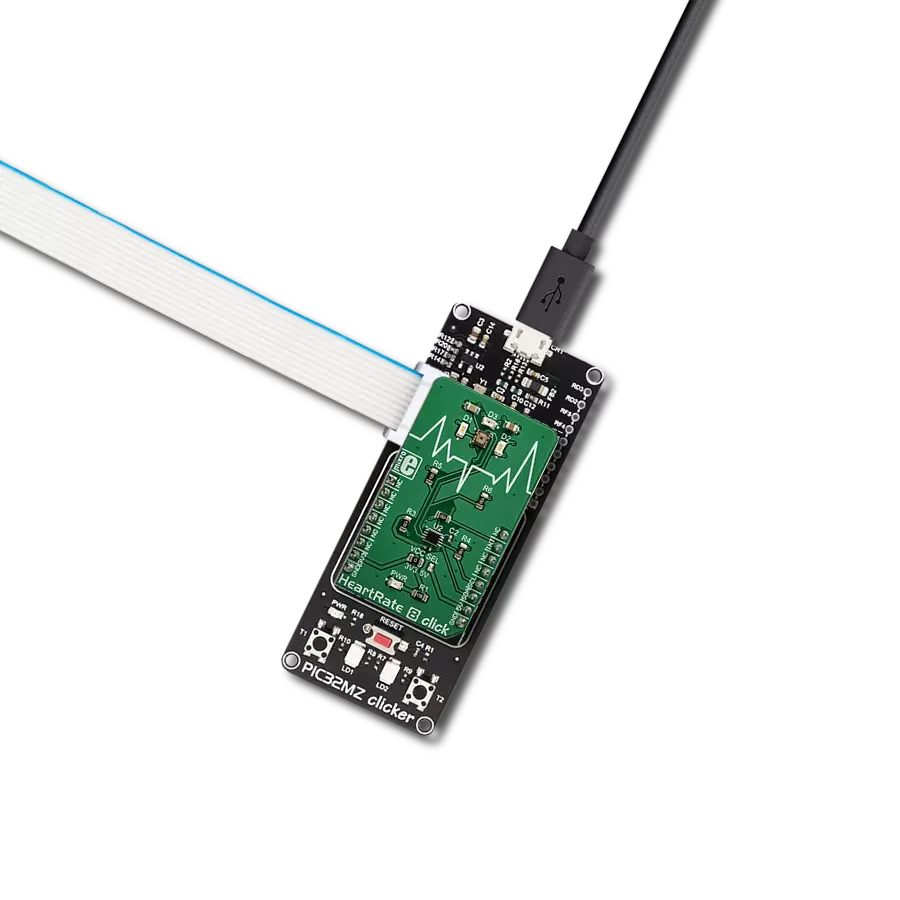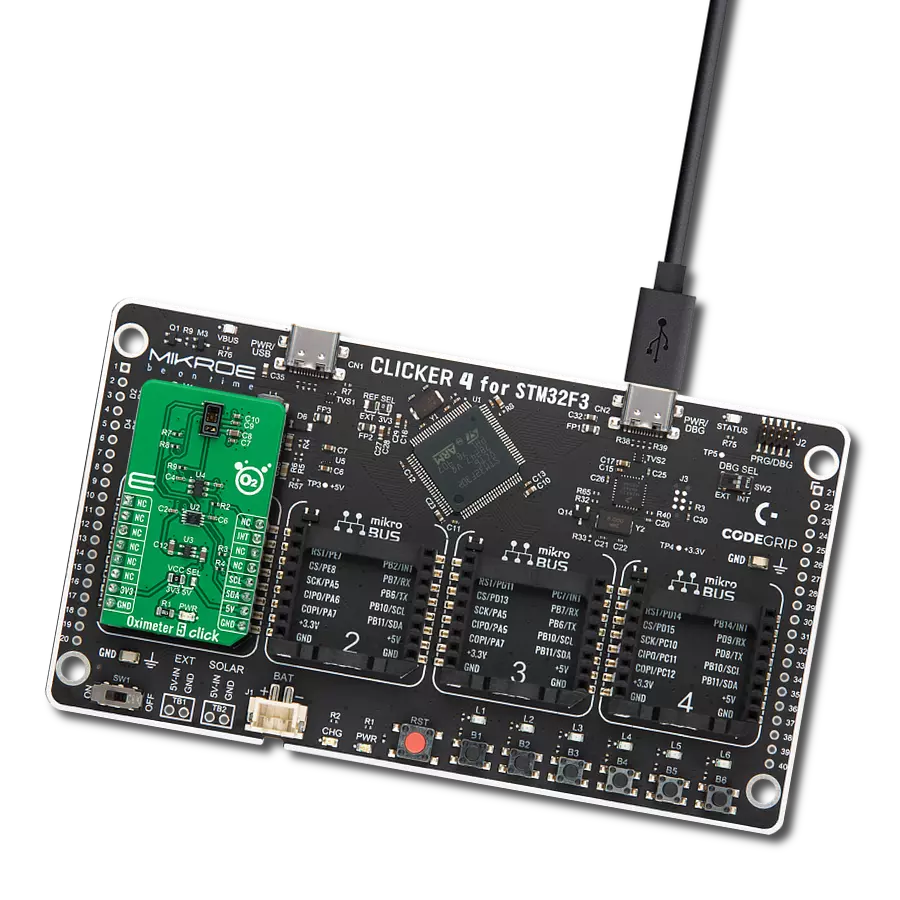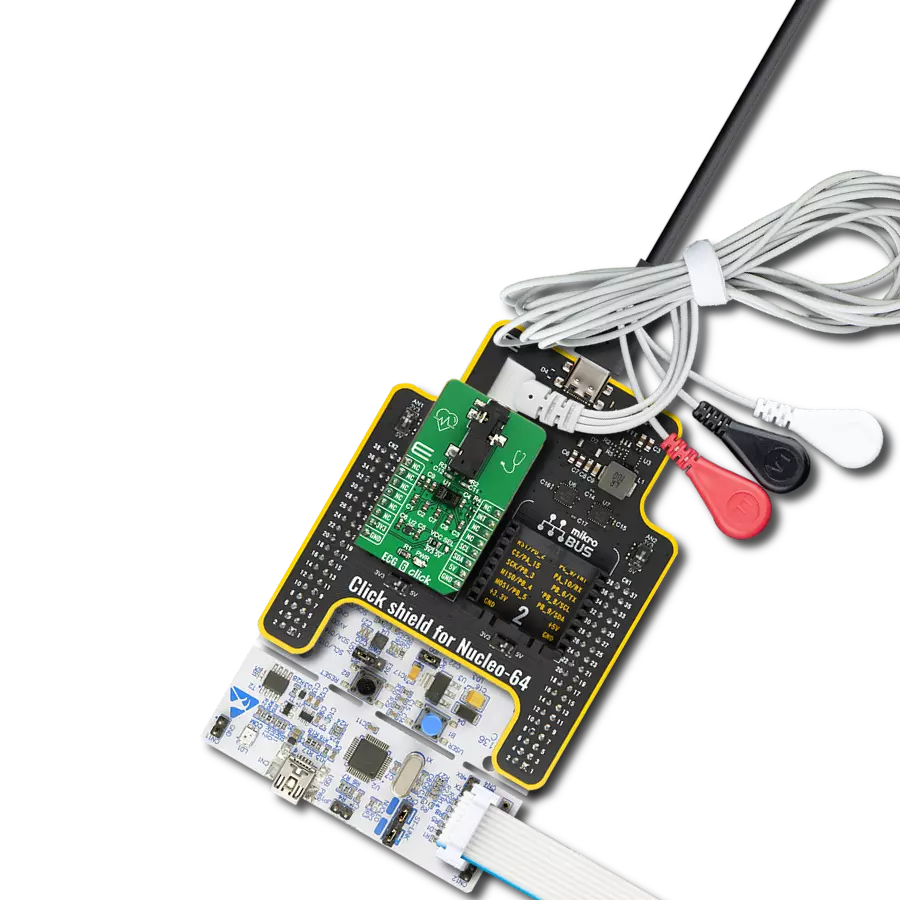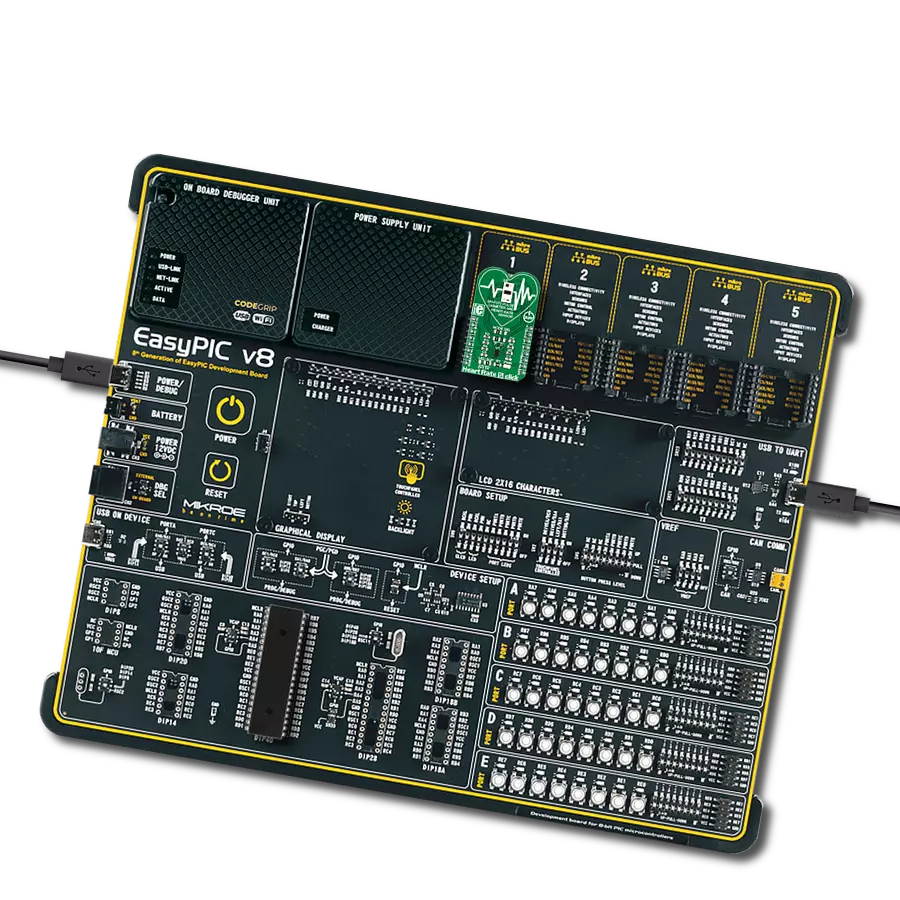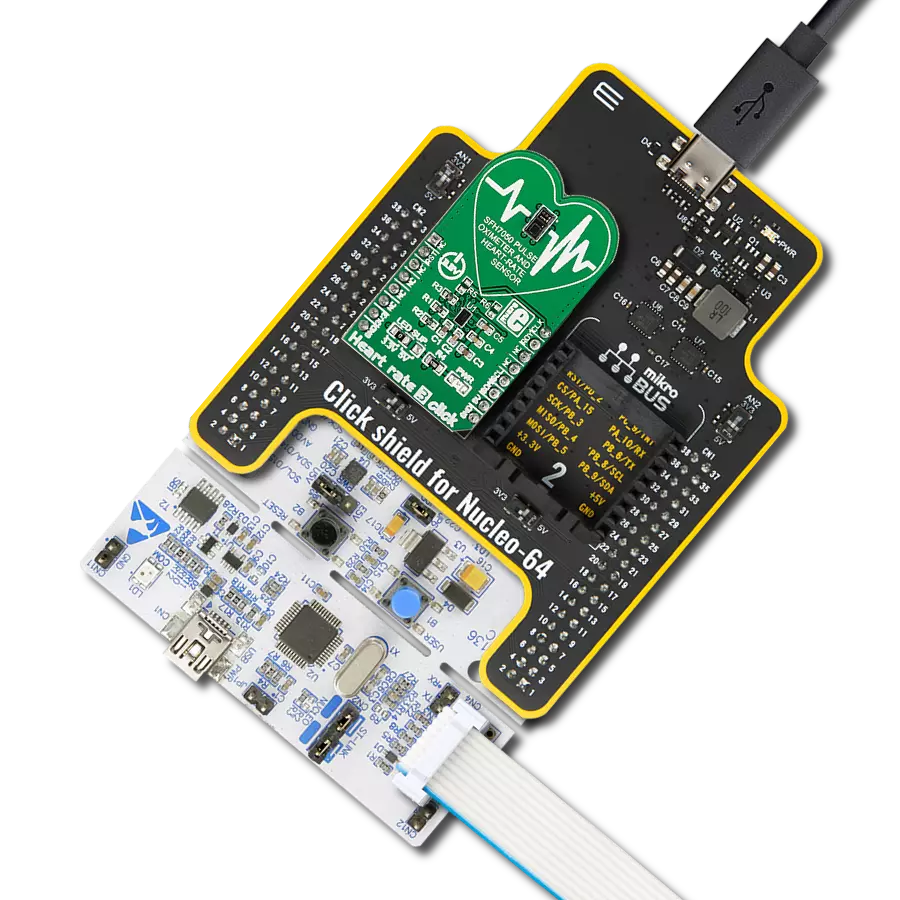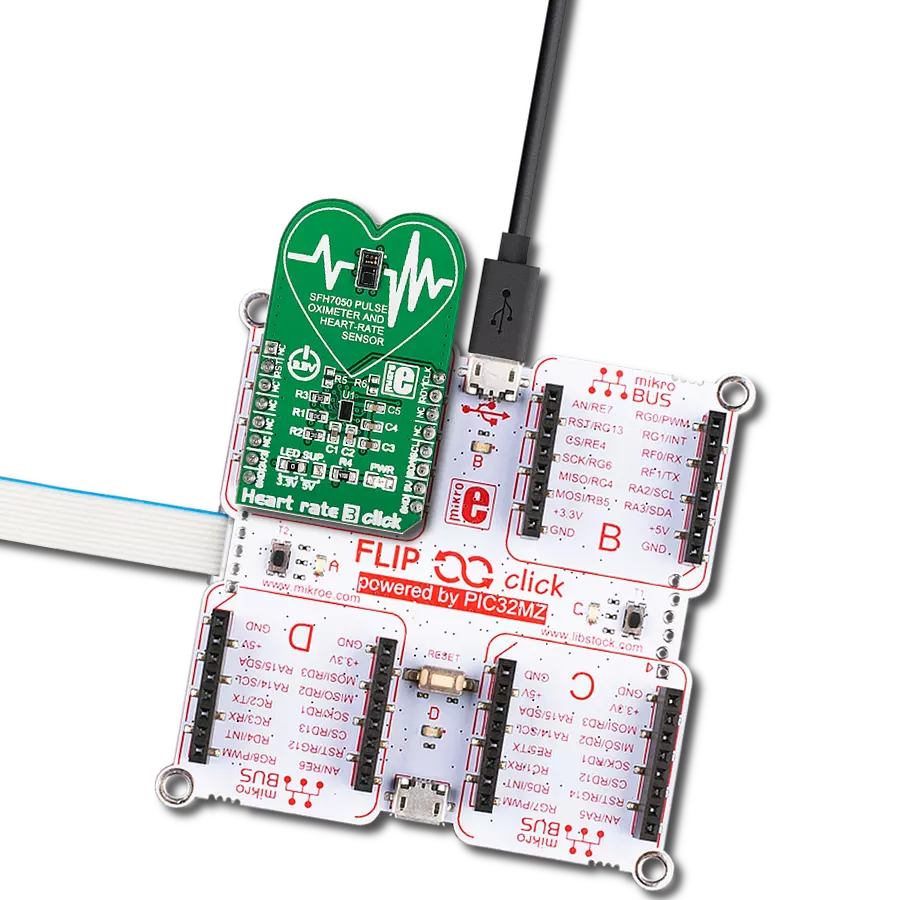Measure the human body's EDA factor, and allow insight into some of the human autonomic nervous system parameters
A
A
Hardware Overview
How does it work?
GSR Click is based on the MCP607, a dual CMOS low-noise OPAMP made by Microchip, and the MCP3201, a 12-bit SAR-type ADC, made by the same company. The input stage consists of the aforementioned voltage divider and a frequency-limiting capacitor. This signal is then fed to the first half of the OPAMP, set to a unity gain. It is used to condition the signal before entering the ADC. The working principle of the GSR click is based on the voltage divider composed of two resistors. One resistor is a fixed resistor 100kΩ (R4), and the second is the human skin, acting as the
variable resistor. DC Voltage is applied to the skin via one electrode, connected to the 3.3V rail. The other electrode closes the electrical circuit through the skin and back to the click board. The voltage at the voltage divider will vary depending on the skin's resistance. The onboard ADC IC uses the SPI for communication with the MCU. The SPI interface pins are routed to the appropriate mikroBUS™ pins. The MCP3201 ADC also needs a clean and stable reference voltage, which the MCP1541, a small, 3-pin specialized reference voltage IC from Microchip, provides. The 5V rail is
routed to the input of the voltage reference, as well as the VCC pin of the ADC IC and the OPAMP IC. This means the Click board™ needs both 3.3V and 5V for proper operation. The other half of the OPAMP is used as the input buffer for the measured signal, and its output is routed to the AN pin of the mikroBUS™. This signal is analog and can be used for either more accurate sampling or for applying some other type of measured signal processing. GSR Click has an onboard 3.5 mm jack used to connect the electrodes to the board securely.
Features overview
Development board
PIC18F57Q43 Curiosity Nano evaluation kit is a cutting-edge hardware platform designed to evaluate microcontrollers within the PIC18-Q43 family. Central to its design is the inclusion of the powerful PIC18F57Q43 microcontroller (MCU), offering advanced functionalities and robust performance. Key features of this evaluation kit include a yellow user LED and a responsive
mechanical user switch, providing seamless interaction and testing. The provision for a 32.768kHz crystal footprint ensures precision timing capabilities. With an onboard debugger boasting a green power and status LED, programming and debugging become intuitive and efficient. Further enhancing its utility is the Virtual serial port (CDC) and a debug GPIO channel (DGI
GPIO), offering extensive connectivity options. Powered via USB, this kit boasts an adjustable target voltage feature facilitated by the MIC5353 LDO regulator, ensuring stable operation with an output voltage ranging from 1.8V to 5.1V, with a maximum output current of 500mA, subject to ambient temperature and voltage constraints.
Microcontroller Overview
MCU Card / MCU

Architecture
PIC
MCU Memory (KB)
128
Silicon Vendor
Microchip
Pin count
48
RAM (Bytes)
8196
You complete me!
Accessories
Curiosity Nano Base for Click boards is a versatile hardware extension platform created to streamline the integration between Curiosity Nano kits and extension boards, tailored explicitly for the mikroBUS™-standardized Click boards and Xplained Pro extension boards. This innovative base board (shield) offers seamless connectivity and expansion possibilities, simplifying experimentation and development. Key features include USB power compatibility from the Curiosity Nano kit, alongside an alternative external power input option for enhanced flexibility. The onboard Li-Ion/LiPo charger and management circuit ensure smooth operation for battery-powered applications, simplifying usage and management. Moreover, the base incorporates a fixed 3.3V PSU dedicated to target and mikroBUS™ power rails, alongside a fixed 5.0V boost converter catering to 5V power rails of mikroBUS™ sockets, providing stable power delivery for various connected devices.
3-wire ECG/EMG cable comes with a convenient 3.5mm phone jack, and it is designed for electrocardiogram recording. This 1m cable is a practical companion for medical professionals and enthusiasts. To complement this cable, you can also use single-use adhesive ECG/EMG electrodes measuring 48x34mm, each equipped with an ECG/EMG cable stud adapter. These electrodes ensure a seamless experience when paired with our ECG/EMG cable and guarantee reliable ECG/EMG signal transmission for comprehensive cardiac monitoring. Trust in the accuracy and convenience of this setup to effortlessly record electrocardiograms and electromyograms with confidence.
Used MCU Pins
mikroBUS™ mapper
Take a closer look
Click board™ Schematic

Step by step
Project assembly
Track your results in real time
Application Output
1. Application Output - In Debug mode, the 'Application Output' window enables real-time data monitoring, offering direct insight into execution results. Ensure proper data display by configuring the environment correctly using the provided tutorial.

2. UART Terminal - Use the UART Terminal to monitor data transmission via a USB to UART converter, allowing direct communication between the Click board™ and your development system. Configure the baud rate and other serial settings according to your project's requirements to ensure proper functionality. For step-by-step setup instructions, refer to the provided tutorial.

3. Plot Output - The Plot feature offers a powerful way to visualize real-time sensor data, enabling trend analysis, debugging, and comparison of multiple data points. To set it up correctly, follow the provided tutorial, which includes a step-by-step example of using the Plot feature to display Click board™ readings. To use the Plot feature in your code, use the function: plot(*insert_graph_name*, variable_name);. This is a general format, and it is up to the user to replace 'insert_graph_name' with the actual graph name and 'variable_name' with the parameter to be displayed.

Software Support
Library Description
This library contains API for GSR Click driver.
Key functions:
gsr_read_value- This function read measurement using MCP3201 ADC integrated on GSR Click
Open Source
Code example
The complete application code and a ready-to-use project are available through the NECTO Studio Package Manager for direct installation in the NECTO Studio. The application code can also be found on the MIKROE GitHub account.
/*!
* \file
* \brief Gsr Click example
*
* # Description
* This app measure the electrodermal activity.
*
* The demo application is composed of two sections :
*
* ## Application Init
* Initializes GSR driver.
*
* ## Application Task
* Sequential reading of ADC and logging data
* to UART. Operation is repeated each 500 ms.
*
* \author MikroE Team
*
*/
// ------------------------------------------------------------------- INCLUDES
#include "board.h"
#include "log.h"
#include "gsr.h"
// ------------------------------------------------------------------ VARIABLES
static gsr_t gsr;
static log_t logger;
// ------------------------------------------------------ APPLICATION FUNCTIONS
void application_init ( void )
{
log_cfg_t log_cfg;
gsr_cfg_t cfg;
/**
* Logger initialization.
* Default baud rate: 115200
* Default log level: LOG_LEVEL_DEBUG
* @note If USB_UART_RX and USB_UART_TX
* are defined as HAL_PIN_NC, you will
* need to define them manually for log to work.
* See @b LOG_MAP_USB_UART macro definition for detailed explanation.
*/
LOG_MAP_USB_UART( log_cfg );
log_init( &logger, &log_cfg );
log_info( &logger, "---- Application Init ----\r\n" );
// Click initialization.
gsr_cfg_setup( &cfg );
GSR_MAP_MIKROBUS( cfg, MIKROBUS_1 );
gsr_init( &gsr, &cfg );
}
void application_task ( void )
{
uint16_t adc_value;
adc_value = gsr_read_value( &gsr );
log_printf( &logger, "ADC Measurements: %u \r\n", adc_value );
Delay_ms ( 500 );
}
int main ( void )
{
/* Do not remove this line or clock might not be set correctly. */
#ifdef PREINIT_SUPPORTED
preinit();
#endif
application_init( );
for ( ; ; )
{
application_task( );
}
return 0;
}
// ------------------------------------------------------------------------ END
Additional Support
Resources
Category:Biometrics






















